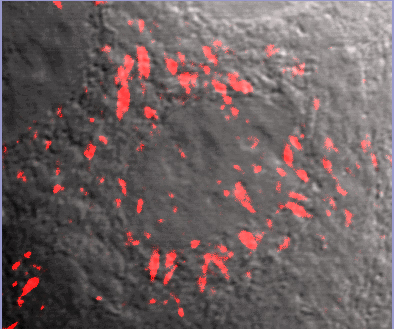| Author | Title | Journal | Year | Article Link |
|---|
| Sadhu, Raj Kumar et al. | Experimental and theoretical model for the origin of coiling of cellular protrusions around fibers | Nature Communications 2023 14:1 | 2023 | ISSN 2041--1723 |
| Gibson, Shayin V. et al. | ADAMTS3 restricts cancer invasion in models of early breast cancer progression through enhanced fibronectin degradation | Matrix Biology | 2023 | ISSN 0945--053X |
| Dickinson, Richard B. et al. | Viscous shaping of the compliant cell nucleus | APL Bioengineering | 2022 | ISSN 2473-2877 |
| Van Der Putten, Cas et al. | Protein Micropatterning in 2.5D: An Approach to Investigate Cellular Responses in Multi-Cue Environments | ACS Applied Materials and Interfaces | 2021 | ISSN 1944-8252 |
| Lauko, Domokos I. et al. | Baculovirus actin-rearrangement-inducing factor arif-1 induces the formation of dynamic invadosome clusters | Molecular Biology of the Cell | 2021 | ISSN 1939-4586 |
| Naka, Y. et al. | Wholly vascularized millimeter-sized engineered tissues by cell-sized microscaffolds | Materials Today Bio | 2020 | ISSN 2590-0064 |
| Summerbell, Emily R. et al. | Epigenetically heterogeneous tumor cells direct collective invasion through filopodia-driven fibronectin micropatterning | Science Advances | 2020 | ISSN 2375-2548 |
| Sundararaman, Ananthalakshmy et al. | RhoJ Regulates α5β1 Integrin Trafficking to Control Fibronectin Remodeling during Angiogenesis | Current Biology | 2020 | ISSN 1879-0445 |
| Lo Vecchio, Simon et al. | Collective Dynamics of Focal Adhesions Regulate Direction of Cell Motion | Cell Systems | 2020 | ISSN 2405-4720 |
| Garbett, Damien et al. | T-Plastin reinforces membrane protrusions to bridge matrix gaps during cell migration | Nature Communications | 2020 | ISSN 2041-1723 |
| Roveimiab, Ziba et al. | Traction and attraction: Haptotaxis substrates collagen and fibronectin interact with chemotaxis by HGF to regulate myoblast migration in a microfluidic device | American Journal of Physiology - Cell Physiology | 2020 | ISSN 1522-1563 |
| Horvath, Aron N. et al. | The Protein Mat(ters) - Revealing the Biologically Relevant Mechanical Contribution of Collagen- And Fibronectin-Coated Micropatterns | ACS Applied Materials and Interfaces | 2019 | ISSN 1944-8252 |
| Tomba, Caterina et al. | Laser-Assisted Strain Engineering of Thin Elastomer Films to Form Variable Wavy Substrates for Cell Culture | Small | 2019 | ISSN 1613-6829 |
| Rafiq, Nisha Bte Mohd et al. | A mechano-signalling network linking microtubules, myosin IIA filaments and integrin-based adhesions | Nature Materials | 2019 | ISSN 1476-4660 |
| De Vos, Ivo J.H.M. et al. | Functional analysis of a hypomorphic allele shows that MMP14 catalytic activity is the prime determinant of the Winchester syndrome phenotype | Human Molecular Genetics | 2018 | ISSN 1460-2083 |
| Hasan, Muhammad M. et al. | Invadosome-mediated human extracellular matrix degradation by Entamoeba histolytica | Infection and Immunity | 2018 | ISSN 1098-5522 |
| Varadaraj, Archana et al. | TGF-β triggers rapid fibrillogenesis via a novel TβRII-dependent fibronectin-trafficking mechanism | Molecular Biology of the Cell | 2017 | ISSN 1939-4586 |
| Funano, Shun Ichi et al. | Vapor-based micro/nano-partitioning of fluoro-functional group immobilization for long-term stable cell patterning | RSC Advances | 2016 | ISSN 2046-2069 |
| Mana, Giulia et al. | PPFIA1 drives active α5β1 integrin recycling and controls fibronectin fibrillogenesis and vascular morphogenesis | Nature Communications | 2016 | ISSN 2041-1723 |
| Blehm, Benjamin H. et al. | Deconstructing the role of the ECM microenvironment on drug efficacy targeting MAPK signaling in a pre-clinical platform for cutaneous melanoma | Biomaterials | 2015 | ISSN 1878-5905 |
| Wood, Sheila | Differentiation of Borrelia Microbes from Collagen Debris and Collagen Fibrils in Blood Cultures | Journal of Microbiology & Experimentation | 2015 | Article Link |
| Comelles, Jordi et al. | Cells as Active Particles in Asymmetric Potentials: Motility under External Gradients | Biophysical Journal | 2014 | ISSN 1542-0086 |
| Steele, Amanda N. et al. | Tandem zyxin LIM sequences do not enhance force sensitive accumulation | Biochemical and Biophysical Research Communications | 2012 | ISSN 0006-291X |
| Nakayama, Masamichi et al. | Thermoresponsive poly(N-isopropylacrylamide)-based block copolymer coating for optimizing cell sheet fabrication | Macromolecular bioscience | 2012 | ISSN 1616--5195 |
| Nagase, Kenichi et al. | Thermo-responsive polymer brushes as intelligent biointerfaces: preparation via ATRP and characterization | Macromolecular bioscience | 2011 | ISSN 1616--5195 |
| Steward, Robert L. et al. | Mechanical stretch and shear flow induced reorganization and recruitment of fibronectin in fibroblasts | Scientific Reports | 2011 | ISSN 2045-2322 |
| Robinson, Elizabeth E. et al. | Fibronectin Matrix Assembly Regulates α5β1-mediated Cell Cohesion | Molecular Biology of the Cell | 2004 | ISSN 1059-1524 |
| Brock, Amy et al. | Geometric Determinants of Directional Cell Motility Revealed Using Microcontact Printing† | Langmuir | 2003 | ISSN 0743-7463 |
























